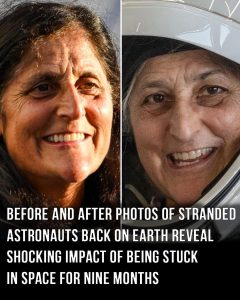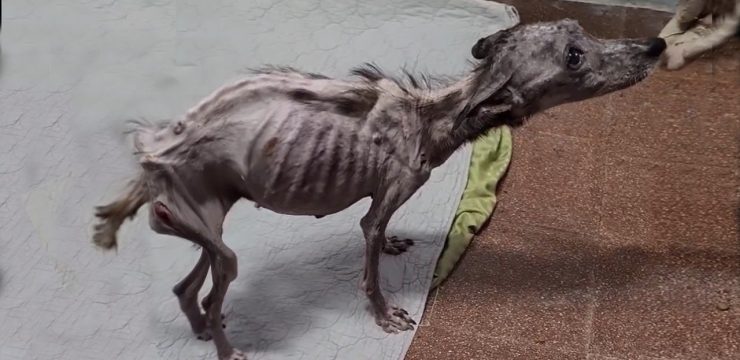After an extraordinary nine months aboard the International Space Station (ISS), astronauts Barry Wilmore and Sunita Williams finally returned to Earth on Tuesday, March 18. What was intended to be a short space mission turned into a prolonged and challenging journey that kept them in orbit far longer than anyone had anticipated. Their story has captivated the public, not only because of the mission’s unexpected length but also due to the toll such an extended time in space has taken on their bodies.

Originally, Wilmore and Williams launched into space in June 2024 with plans to spend just over a week on the ISS. The duo was part of NASA’s Boeing Crew Flight Test, heading into space aboard the Starliner spacecraft, with an expected return to Earth just eight days later. However, complications and unexpected challenges forced the mission to extend far beyond its intended timeline. As a result, both astronauts spent nearly nine months in the microgravity environment of space, delaying their return home until March 2025.
Their eventual journey back to Earth was facilitated by the SpaceX Dragon spacecraft, which successfully transported them from the ISS to solid ground. Upon landing, both astronauts were seen being carried on stretchers, a common practice for astronauts returning from lengthy space missions. After months without gravity, the human body undergoes significant changes, making it difficult to stand or walk immediately upon return. This adjustment period is both physically demanding and medically monitored, as NASA works to ensure the health and safety of its astronauts.
Reacclimating to life on Earth after such an extended period in space involves much more than just standing up and walking again. Wilmore and Williams are now re-experiencing Earth’s gravity for the first time in nine months, and that alone poses serious challenges. They must not only readjust to breathing Earth’s atmosphere but also contend with the physical consequences of microgravity, such as muscle atrophy and bone density loss. Experts often refer to these changes using terms like “chicken legs” and “baby feet” to describe the thinning of limbs and the softening of the soles of the feet—common side effects for astronauts who spend long durations in space.
Health professionals are closely monitoring the pair at NASA’s Johnson Space Center in Houston. There, they will undergo a series of detailed medical evaluations, which are standard procedures for astronauts returning from extended missions. However, some experts have raised concerns that Wilmore and Williams may face more than just temporary discomfort. According to the Daily Mail, the duo could be at an increased risk for long-term health problems, including a heightened likelihood of developing cancer, due to prolonged exposure to space radiation.
Another significant issue the astronauts are dealing with is fluid redistribution within their bodies. In the absence of gravity, bodily fluids tend to shift upward, accumulating in the head. This can cause a condition known as Spaceflight Associated Neuro-Ocular Syndrome, or SANS. One of the most noticeable effects of SANS is the pressure it places on the eyes and optic nerves, potentially impacting vision and altering the appearance of astronauts’ faces. While many astronauts see their vision return to normal after coming back to Earth, NASA has acknowledged that some effects of SANS may be permanent, particularly for those who have spent a long time in space, such as Wilmore and Williams.
Adding to this, weight loss is a visible consequence of their prolonged stay in space. Observers have noted that both Wilmore and Williams appear significantly thinner than before their mission, likely due to muscle loss and difficulties in maintaining weight in a microgravity environment. Even though this is expected, the extent of physical change has raised eyebrows. Their thin appearance underscores the physical strain of long-term space travel and the challenges astronauts face when trying to maintain a balanced, healthy physique while floating in a zero-gravity environment.
Moreover, their facial features appear puffy—a condition linked to Spaceflight Venous Thrombosis (SVT), which also results from fluid shifting upwards in the body. SVT causes swelling in the face, contributing to the bloated look commonly seen in astronauts returning from space missions. This, combined with muscle atrophy and bone weakening, paints a clear picture of the demanding nature of life in space.
Despite all these challenges, the bravery and dedication displayed by Wilmore and Williams remain truly admirable. Their willingness to endure such hardships in the name of scientific discovery highlights the extraordinary sacrifices astronauts make. Their mission has not only contributed valuable data to NASA’s ongoing research into long-duration spaceflight, but it has also shed light on the health risks associated with extended time in space, helping pave the way for future missions—including those that may one day reach Mars.
Still, the physical toll of this mission is hard to ignore. The images of Wilmore and Williams being carried off stretchers upon landing have sparked widespread interest and concern. Social media users and fans around the world have expressed support, curiosity, and admiration for the astronauts. Some have remarked on how thin they look, while others have commented on the swollen appearance of their faces.
As Wilmore and Williams begin their recovery and reintegration into life on Earth, their experience serves as a powerful reminder of both the possibilities and the perils of space travel. Their journey, marked by resilience and determination, has brought attention to the physical demands astronauts face—and the support they need when they return home.
What are your thoughts on Wilmore and Williams’ appearance upon their return to Earth this week? Share your opinions in the comments below—we’d love to hear what you think about this incredible story of endurance and the human spirit.





